
Bricks: Durable construction material for various applications.
In the context of construction materials, a brick is a rectangular block that is commonly used in building walls, pavements, and other structures. Bricks are typically made from clay, shale, or a combination of the two, which is then fired in a kiln to harden them. Bricks have been used as a construction material for thousands of years and are known for their durability and strength. They provide excellent thermal insulation and can withstand high temperatures, making them suitable for various building applications.
Bricks can be classified into various types based on their composition, manufacturing process, and intended use. Some common types include clay bricks, concrete bricks, sand-lime bricks, engineering bricks, and fire bricks. Each type has its own set of properties and suitability for different applications. The production of bricks involves several steps. Initially, the raw materials such as clay or shale are mined or excavated. The materials are then processed, mixed with water, and molded into the desired shape using molds or extrusion machines. After molding, the bricks are dried in kilns or under the sun to remove excess moisture. Finally, they are fired in a kiln at high temperatures (around 2,000 degrees Fahrenheit or 1,100 degrees Celsius) to harden them through a process called vitrification.
In modern construction, bricks are often supplemented or replaced by other materials such as concrete blocks, precast panels, or steel frames. However, bricks continue to be widely used due to their availability, cost-effectiveness, and aesthetic appeal. Brick, which is known as Brick in English and Latin, is one of the materials that is very widely used and is produced and consumed in various cases such as industrial and traditional. Brick is one of the most widely used materials in construction, which is produced in different types, models and formats. One of its models is the glazed brick, which we are going to talk about in this article and its various uses.
Bricks offer several advantages in construction. They are readily available in most regions, making them a convenient choice for builders. Bricks have a long lifespan and require minimal maintenance. They are non-combustible, providing fire resistance and enhancing the safety of structures. Bricks also have good acoustic insulation properties, reducing sound transmission between rooms. While bricks have numerous benefits, they also have some limitations. They can be heavy, which may require additional structural support. The manufacturing process of bricks consumes energy and releases carbon dioxide emissions. Bricklaying can be labor-intensive and time-consuming, affecting construction schedules. Additionally, the uniformity and quality of bricks may vary, leading to variations in dimensions and color.
Bricks are actually a type of block designed for various uses such as walls, paving stones and other elements related to construction. Although in the past they were made by hand and left in front of the air to dry, nowadays they are mostly produced by machines and in special brick kilns. From the past until now, the construction of a shelter has been one of the concerns of humans, and they have designed and used various building materials for this purpose over thousands of years. Bricks, as one of the most popular types of these materials, have always been used in construction, decoration, paving stones, etc., due to their diversity and high resistance in different weather conditions.
Brick is considered the first building material in the past, when early humans saw the cooking of clay next to the ovens, they realized that it was more beautiful and harder than the block. Brick soil is different according to the type of bricks and the most common type is clay. But to produce high-quality bricks, lime in clay should not be too much.
The composition of bricks can vary depending on the type and desired characteristics. Clay bricks are primarily made of clay and shale, while concrete bricks consist of a mixture of cement, aggregate, and water. Bricks generally possess excellent compressive strength, allowing them to withstand heavy loads. They also have good thermal insulation properties, helping to regulate temperature and reduce energy consumption. Additionally, bricks are resistant to fire, pests, and decay. Bricks are commonly used in residential, commercial, and industrial construction. They are primarily used to build walls, both load-bearing and non-load-bearing, as well as partitions and facades. Bricks are also utilized in the construction of pavements, chimneys, fireplaces, and retaining walls. Their versatility, durability, and aesthetic appeal make them suitable for a wide range of architectural styles.
The standard size of a brick varies among countries, but a common dimension is approximately 9 inches long, 4.5 inches wide, and 3 inches thick (230 mm x 115 mm x 75 mm). Bricks can have different colors, textures, and surface finishes depending on the manufacturing process and the desired aesthetic effect. Bricks are typically laid in courses using mortar, which is a mixture of cement, sand, and water. The mortar bonds the bricks together, creating a solid and stable structure. Different patterns, such as running bond or herringbone, can be achieved by arranging the bricks in specific ways during construction.
-

Bricks are rectangular blocks used in construction, made primarily from clay or shale. They are known for their durability, thermal insulation, and fire resistance. Various types of bricks exist, including clay, concrete, and fire bricks, each suited for different applications. The brick production process involves mining raw materials, molding them into shape, drying, and firing in kilns to achieve hardness. Despite the rise of alternative materials like concrete blocks and steel frames, bricks remain popular due to their cost-effectiveness and aesthetic appeal. They are widely used in residential and commercial construction for walls, pavements, and decorative elements. Bricks offer advantages such as long lifespan and minimal maintenance but can be heavy and labor-intensive to install. Their versatility allows for various architectural styles while providing good acoustic insulation.
The standard size of a brick varies globally but typically measures around 9 inches long by 4. 5 inches wide by 3 inches thick. Overall, bricks continue to be a fundamental building material with a rich history in construction.
-
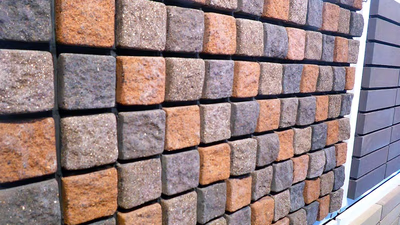
Clay bricks dominate the market due to their versatility and various manufacturing processes. They can be categorized into several types, including dry-pressed, extruded, wire-cut, concrete, sand-lime, perforated, and special-shaped bricks. Each type has unique properties suited for different applications. For instance, dry-pressed bricks offer a smooth texture while extruded bricks are lightweight with improved insulation. Concrete bricks provide higher strength for structural uses, whereas sand-lime bricks excel in moisture resistance. Perforated bricks enhance ventilation and are ideal for damp areas. Special-shaped bricks cater to specific architectural needs. Additionally, bricks can be classified based on quality (first, second, third grade), production methods (extruded, pressed, handmade), materials (clay, shale, concrete), usage (built-in or exposed), application (ordinary or engineering), and appearance (hollow or beveled).
Engineering bricks are particularly strong and suitable for demanding environments like basements and manholes. Fireproof or refractory bricks withstand high temperatures and are essential in fireplaces and kilns. The diversity in brick types allows for a wide range of design possibilities in construction.
-
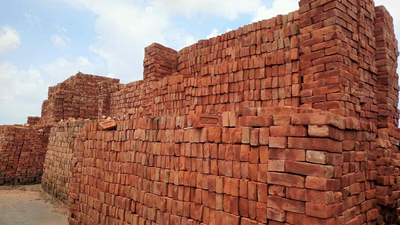
The production of bricks involves several critical steps that influence their quality and price. The process begins with the extraction of raw materials, primarily clay, which is then prepared by removing impurities and adding iron oxide for color. The clay is mixed with water to create a moldable consistency before being shaped through traditional or machine methods. Drying follows, where moisture is gradually removed to prevent cracking. Finally, the bricks are baked in kilns at high temperatures, allowing for crystallization and hardening. Variations in the process can lead to different types of bricks, including glazed options that require an additional surface treatment. Each stage of brick production is essential for ensuring durability and aesthetic appeal, making it crucial for manufacturers to adhere to best practices.
-
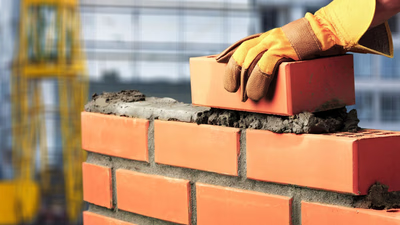
Bricks are a fundamental building material used in various construction applications, including residential and commercial structures. They provide essential structural strength, stability, and durability for load-bearing and non-load-bearing walls, pavements, and retaining walls. Their versatility allows for the creation of architectural features like arches and decorative elements, enhancing the aesthetic appeal of buildings. Bricks are also crucial in the restoration of historic structures, ensuring that renovations maintain original character. In landscaping, bricks define spaces through raised beds and garden walls while adding elegance to outdoor areas. Additionally, bricks serve as a medium for artistic expression in installations and sculptures. Despite a shift towards metal or concrete skeletons in modern multi-story buildings, bricks remain popular for facades and other applications due to their durability and thermal properties. They are particularly valued in constructing fireplaces, chimneys, industrial structures, boundary walls, and fences due to their fire resistance and insulation capabilities. The ongoing interest in brick usage reflects its importance within the construction industry.
-
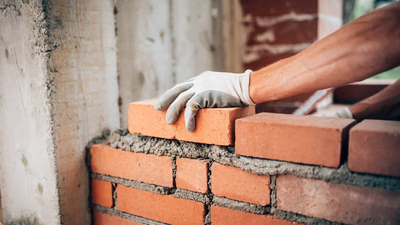
Bricks have a rich history dating back to around 7000 BC in modern-day Turkey and the Middle East. Initially made from sun-dried mud or clay, these early bricks were essential for constructing simple structures. The Mesopotamians advanced brick manufacturing techniques, introducing kiln firing to create stronger bricks, exemplified by the iconic Ishtar Gate in Babylon. Although brick usage declined during the Middle Ages, it saw a revival during the Renaissance, particularly in the Netherlands. The Industrial Revolution further transformed brick production with steam-powered machines and mechanized kilns, leading to standardized sizes and increased output. In Iran, archaeological evidence shows brick kilns dating back over 6000 years. Ancient Egyptians also utilized mud bricks extensively for their monumental constructions, including pyramids. The Romans innovated by using mortar as a bonding agent, enhancing structural stability and leading to widespread use across their empire. Today, while modern materials like concrete and steel have emerged, bricks remain popular due to their durability and aesthetic qualities.
-
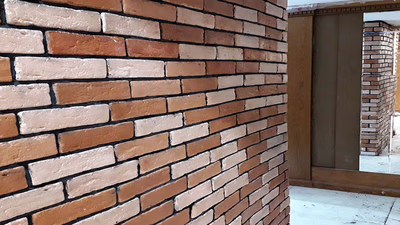
Brick is an environmentally friendly, inorganic material that excels in construction due to its moisture absorption and noise insulation properties. Its energy efficiency is notable, as refractory bricks help maintain indoor temperatures, reducing energy waste. The durability of brick ensures minimal maintenance, as it retains its aesthetic appeal over time without special care. Resistant to deformation from temperature changes and pressure, bricks are suitable for various architectural designs and can support buildings over eight stories. Their fire-resistant nature enhances safety by preventing the spread of flames and toxic gases. Additionally, bricks are versatile in design, available in various colors and styles that cater to different tastes. They can be easily recycled and reused, contributing to sustainability in construction. Overall, the combination of beauty, functionality, and longevity makes brick a preferred choice for modern building facades.






